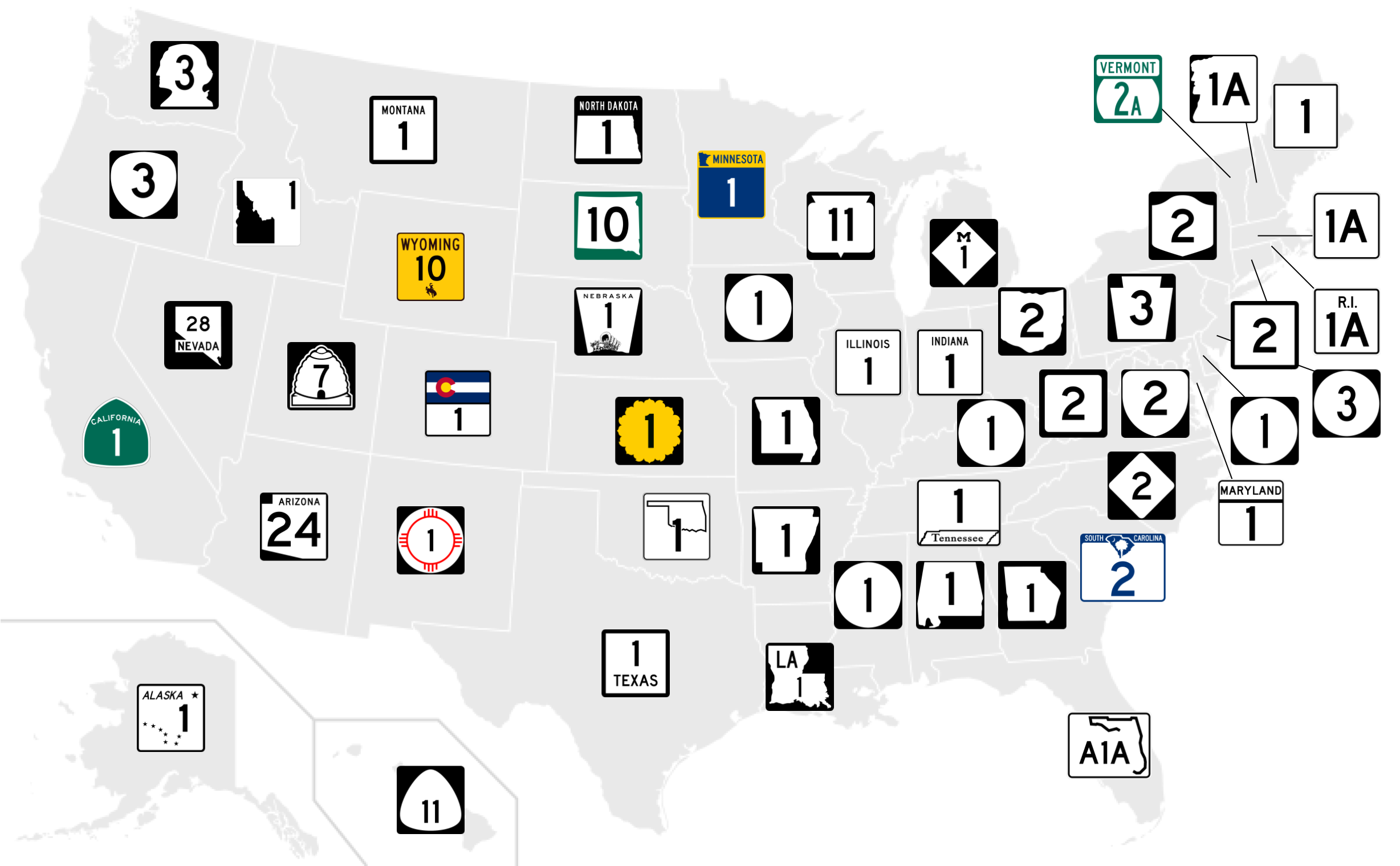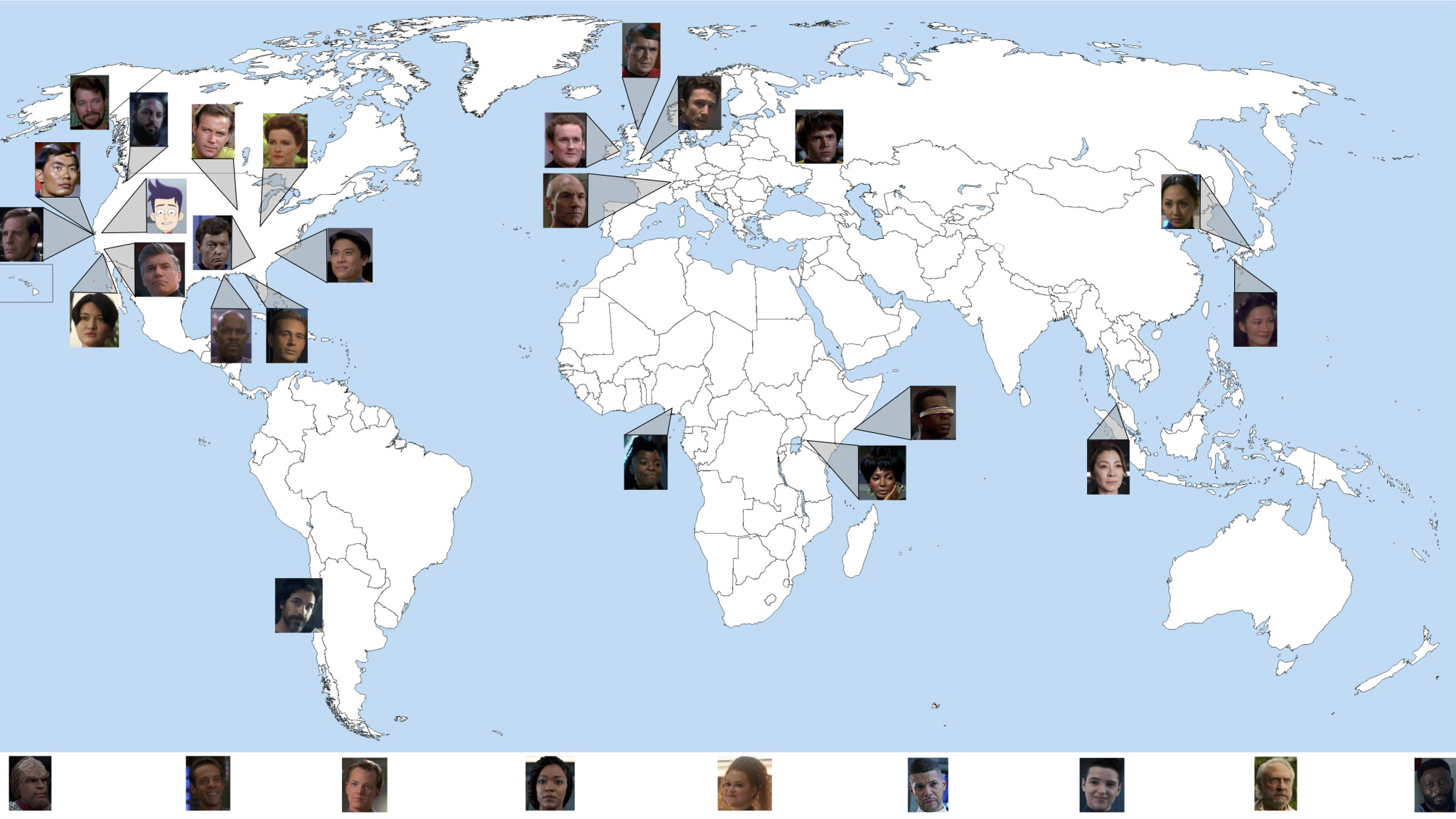2024 travels
Dec. 31st, 2024 01:48 pmCambridge, Mass.

 A map of Star Trek major characters who canonically were born on or grew up on Earth, and where they’re from. Across the bottom row are several characters who are canonically from or implied to be from Earth, but there’s no specific location that they’re from directly stated in canon.
A map of Star Trek major characters who canonically were born on or grew up on Earth, and where they’re from. Across the bottom row are several characters who are canonically from or implied to be from Earth, but there’s no specific location that they’re from directly stated in canon.Some things to observe:

Anyway, I barely interacted with the ⟂IW virtual environment at all—in part because I was absorbed in solving the puzzles themselves; in part because, well, during a normal Mystery Hunt I don't usually interact with the physical MIT campus all that much; and in part because bandwidth issues or something that meant I couldn't really have the ⟂IW "Projection Device" and video chats with my co-solving teammates open at the same time without severe lags. I think the Hunt's novel puzzle-unlocking mechanism sounded really clever—you unlock new puzzles by interacting with NPCs in the ⟂IW virtual world, and solving puzzles can earn you access to new areas of the map so you can find new NPCs—although I never really interacted with it myself. The writing team said their plan was to simultaneously make the Projection Device essential to the Hunt while also making sure people who weren't interested in it and just wanted to focus on solving puzzles had the opportunity to do that, and I guess from my vantage point in that second group it seems to me that the plan worked well enough!
Being at home rather than together in one place with the team meant that it was harder to get a feel for what other people on the team were working on, and thus the overall structure of the hunt and its rounds. In Cambridge, when people are working on a metapuzzle they usually do it on the big whiteboard in the front of the room, which makes it easy to see where we stand with respect to progress on a meta, when people are working in it and when they have insights, and so on. I think the absence of that physical presence this year it part of the reason why I had little involvement in metapuzzle solving, and it may be why it took my team a long time to get started on some of the metas—it was hard to see where were were on them and prioritize. Or at least that was how I experienced it.
I like the trend in Mystery Hunt design where the Hunt begins with a single round with a straightforward meta structure, and then once that is completed it opens up additional rounds which might each have their own widely varying structures. So some of the later rounds in this Hunt had multiple submetas in parallel, some had just one meta for all the puzzles, some had submetas sort of nested within each other: having each round not only have a different metapuzzle but a potentially different structure of how the metapuzzles relate to the puzzles keeps solvers on their toes and adds another layer of interest. I didn't work on the giga/kilo/milli/nano round meta structure at all, but I want to especially highlight the innovative structural conceit of that one: a round which is solved by backsolving an impossible puzzle based on the meta answer, rather than on extracting the meta answer itself; and backsolving that reveals that it's the meta answer to another round which works the same way, so instead of solving puzzles to get to a metapuzzle to get to a meta-meta, you start from the meta-meta and work down to the bottom-level puzzles. I have no idea what the experience of solving that was like, so I don't know if it was actually fun to do (and it seems to depend more on pre-existing familiarity with typical Hunt round structure, in order to subvert it, than most metas do); but I'm very impressed by the idea and by the level of experimentation with what defines a Mystery Hunt round and metapuzzle.
I'm also grateful to the writers this year for not giving us a fake theme: the theme presented at kickoff was what the theme of the Hunt actually was. There were plot developments over the course of the Hunt that kept the theme interesting, but not radical twists revealing that the theme was something other than what we'd been told it was. I think a fake theme has been done effectively approximately once, and that was in 2003. I was wondering, given the "upside-down" gimmick of the name ⟂IW, if it would turn out to be a Stranger Things theme, but I'm just as happy it didn't.
Finally, the puzzles! Almost all of the puzzles that I worked on myself I thought were great. I mean I have some criticisms here and there, but overall these seemed like an extremely solid set of puzzles—even though it seemed like there were a whole lot of errata emails making corrections to them! I think the remote-solving experience pushed me to do more beginning-to-end solves on puzzles; often in Cambridge I sort of flit between puzzles when I hear people on the other side of the room doing something that sounds interesting, or when we hit a dry patch on a puzzle and stop making forward progress. Not being in a room with the rest of the team made me more likely to focus on a single puzzle instead of getting distracted by bits and pieces of others. There were a few puzzles I dropped in on in the middle, and a few I abandoned because I wasn't making progress, but I think I did way more complete puzzles than I often have in recent Hunt years.
Some comments I have on specific puzzles!
( Spoilers below )
Some other puzzles that I worked on and enjoyed, but don't have any comments about, include the following: Common Knowledge, Don't Let Me Down, For Better or For Worse, Not Again!, The Yew Labs metapuzzle, Exactly, and Look What We Drew. And while I was looking through puzzles to write this blog post, I came across Title of the Puzzle, a delightful little puzzle that I never actually saw during the Hunt but that I highly recommend.